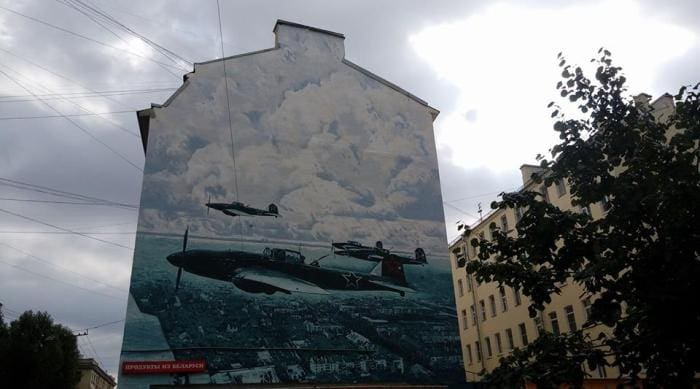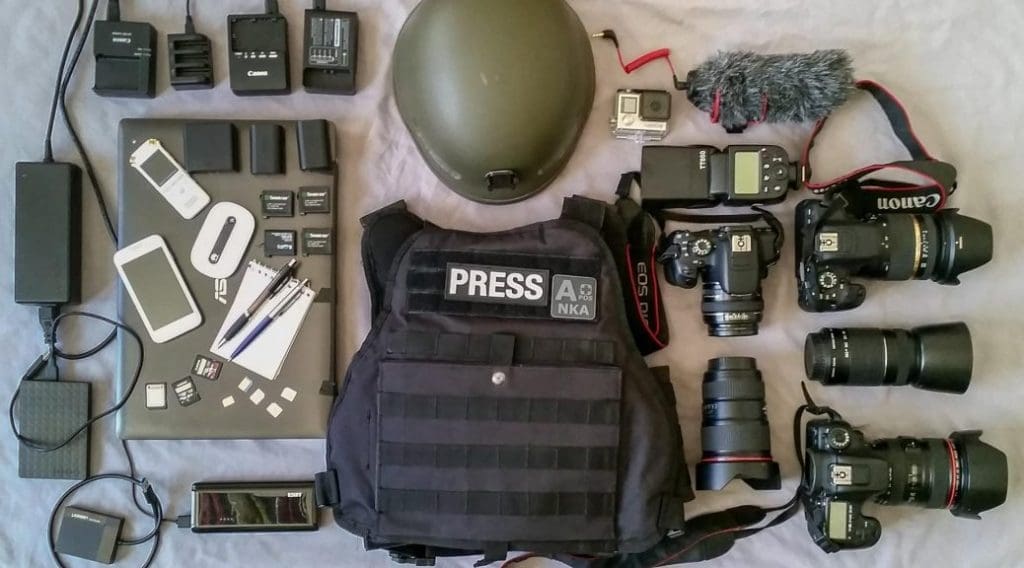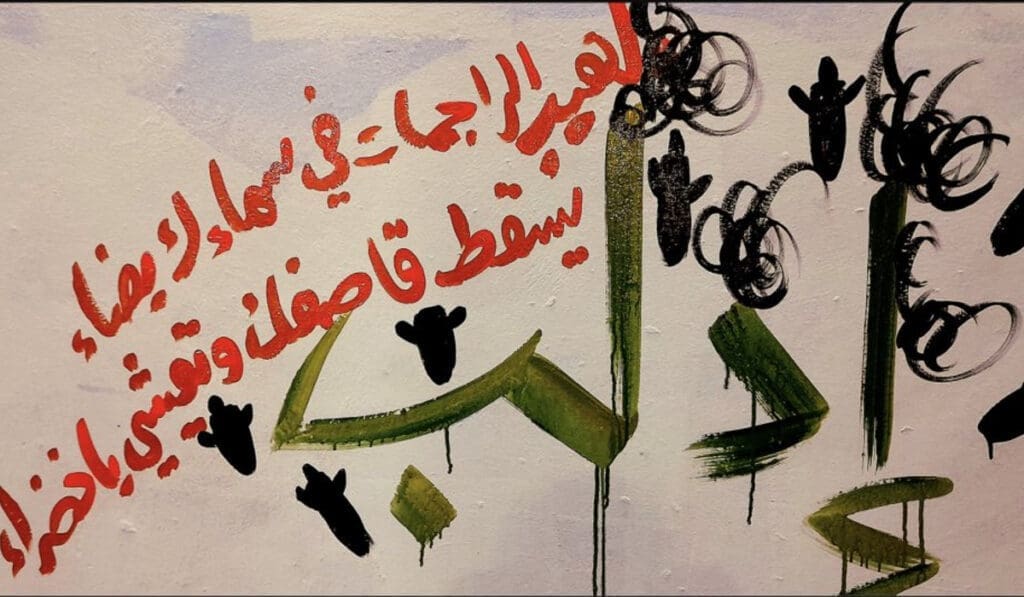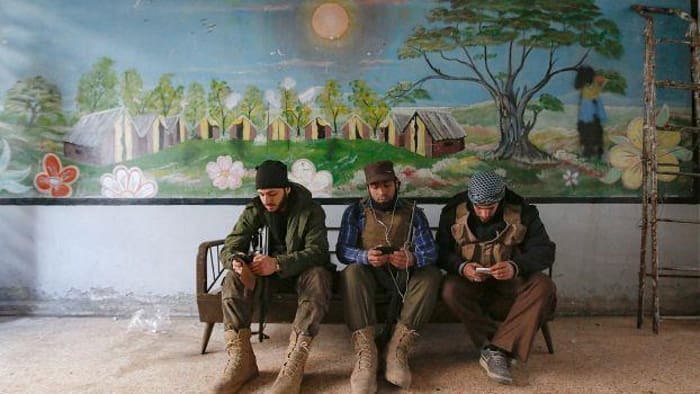by Tommy Campbell for The Russian Reader
17 August 2017 (original post)
All we have to look forward to are past wars and future wars, but God help us from revolutions…
When my charge Abubakar and I emerged from the courtyard of our building earlier today for our afternoon constitutional, we were abruptly confronted by a moving van, almost blocking the exit to the street. The van, which was quite filthy, had two “patriotic” (nationalist) bumper stickers tattooed on its back bumper.

You can say what you like about the Soviet War Memorial in Berlin’s Treptower Park, but the Great Fatherland War was definitely not the “war to end all wars” almost anywhere, and certainly not in the Soviet Union and post-Soviet Russia, which happily intervened militarily in Hungary, Czechoslovakia, and Afghanistan after the war, as well as enthusiastically engaging in lesser Cold War shenanigans all over the globe with and without its sparring partner the US. Since its convenient self-collapse, it has twice reduced Chechnya to rubble, occupied Crimea, set Donbass on fire, and razed East Aleppo to the ground. So much for not knowing what war is like. The experience has merely been severely localized to keep the ruling and chattering classes of Moscow and Petersburg from knowing what it’s like.

Here we see the historical semantic switch that is always flicked by Russian nationalists, played out, in this case, on a single, dust-encrusted moving van bumper. Since the Soviet Union made the “ultimate sacrifice” in the Second World War, it now gets a free pass in all present and future conflicts, which are somehow, usually vaguely, provoked by the “raw deal” the Soviet Union and, especially, ethnic Russians supposedly got in the aftermath of the Second World War and the Cold War.
The second bumper sticker should thus be seen as a serious/“humorous” threat to invade Europe in the very near future. The really funny thing is it is addressed to a purely domestic, i.e. Russian, audience. Perpetually “collapsing” Europe, brought to its knees, allegedly, by Muslim fundamentalists, gays, and political correctness (in the Russian popular imagination), and thus deserving of invasion (salvation) by Putinist Russia, literally cannot see this message, ostensibly addressed to it, not to other Russians, who have it drilled into their heads on a hourly basis, unless they avoid the Russian state media altogether, which many of them have done to keep their heads from exploding.

An acquaintance came home today to find a once blank or otherwise adorned firewall, as depicted above, painted over with an alarming, menacing war scene. There was a brief period between the collapse of the Soviet Union and Putin 2.0 or Putin 3.0, when the city’s numerous, achingly beautiful firewalls were freed of portraits of Politburo members and exemplary socialist laborers and allowed to be themselves, which was something like the visual equivalent of one hand clapping. But when money and politics poured back into the city in the noughties, the firewalls were an easy means for district council officials to show residents and city hall they were engaged in “improvements” and not just pocketing the budget money entrusted to them. (They were doing that, too, whatever else they were pretending to do.) Hiring a crew of hacks to paint the firewall in an otherwise dreary courtyard and arranging a few benches or a little garden or playground below the mural was just the ticket.

Those days of mostly harmless kitsch are now long past. Firewalls should now say something big and important, if the city is going to bother to put up the hard cash to paint them, and that message has to be aggressive and “patriotic.” As one commentator wrote, upon seeing the image of the Soviet warplanes, above, the impression they make is that Russia must start a war immediately.
Or, as in a series of five murals painted on different walls in five Russian cities on the occasion of Putin’s birthday in October 2014, “monumental propaganda” is made to short circuit all of Russian/Soviet history, especially the country’s triumphs, to the current regime and its ruler for life.
Thankfully, there are times when the public meta-historical messages are either unreadable or deeply ambiguous, as in this advertisement and accompanying promotion for the Uberesque taxi company Taksovichkof. (In the interests of full disclosure, I use their services very occasionally.)

It transpires that the route includes St. Isaac’s Cathedral; the barracks of the Volyhnia Regiment, who decisively came down on the side of the Provisional Government during the February 1917 Revolution; the Smolny Institute, where the Bolsheviks were temporarily headquartered in October 1917; the Finland Station; the nearby Crosses Prison, where many revolutionaries of all stripes, not just the Bolsheviks, did hard time; the revolutionary battleship Aurora, which fired the shot heard round the world, returned to its moorings recently after extensive repairs; the mansion of ballerina Mathilde Kschessinska (currently, the Museum of Political History), where Lenin read out his so-called April Theses (“The Tasks of the Proletariat in the Present Revolution”) after returning from exile in Switzerland; the Peter and Paul Fortress, which housed many political prisoners and revolutionaries during the tsarist period; and, finally, the Winter Palace, stormed by a unit of Bolsheviks and other revolutionaries on October 25, 1917, as a means of asserting the hard left’s symbolic victory in the second revolution.
Unfortunately, knowing a little bit about the political views of the local TV celebrity and historian who recorded the tour’s audio guide, I can anticipate the tenor of the tour will be fairly counterrevolutionary and reactionary (i.e., “liberal”). But it’s better than declaring war on Finland again, I guess.
—TRR
P.S. The taxi tour costs 1,500 rubles (approx. 22 euros at current exchange rates). It lasts at least an hour and a half depending on traffic conditions, which are usually brutal from morning to night in downtown Petersburg. You can go on the tour from five in the morning (ideal, I would think) to twelve midnight (when the downtown is crawling with merrymakers).

All images via The Russian Reader





